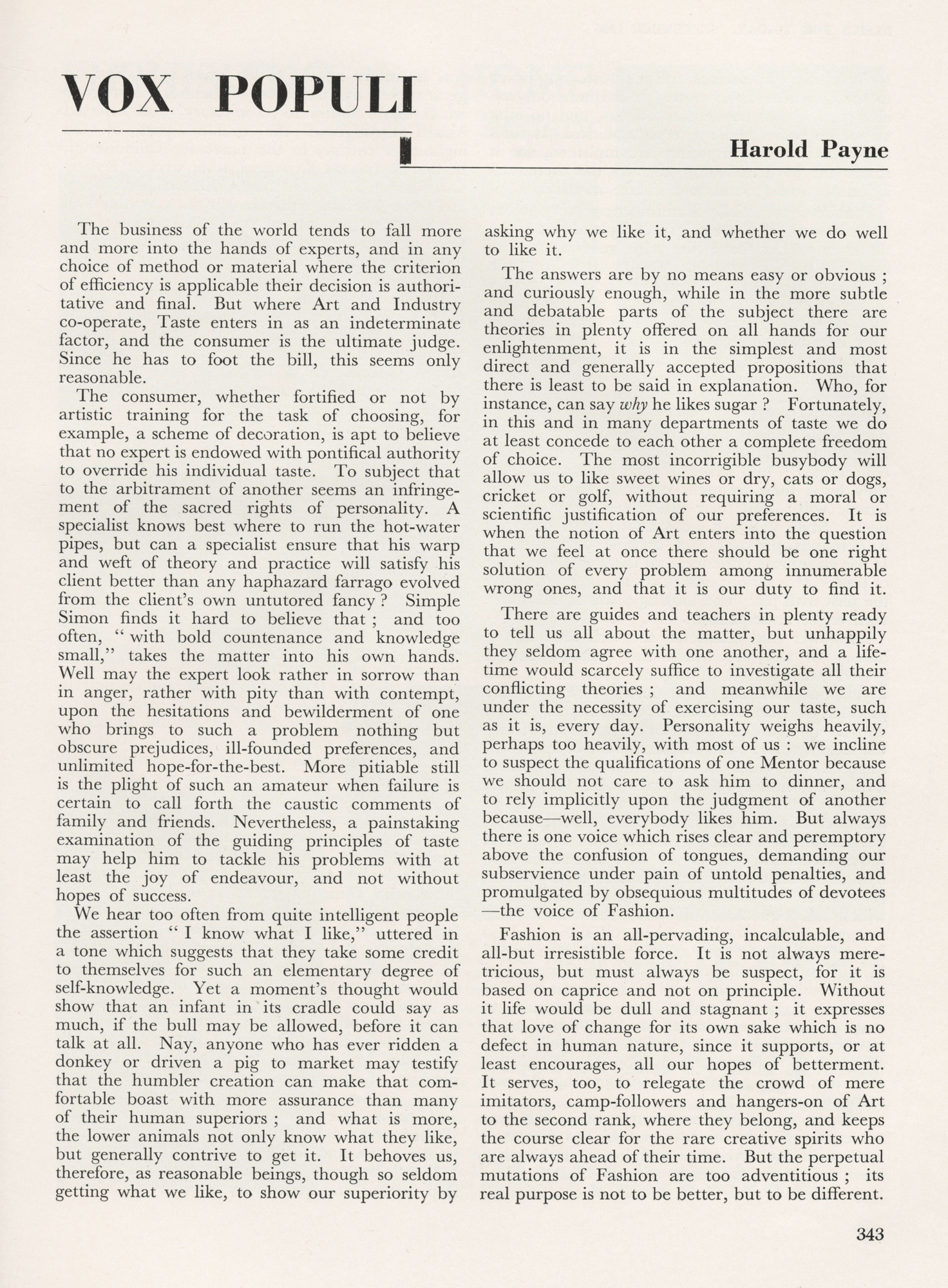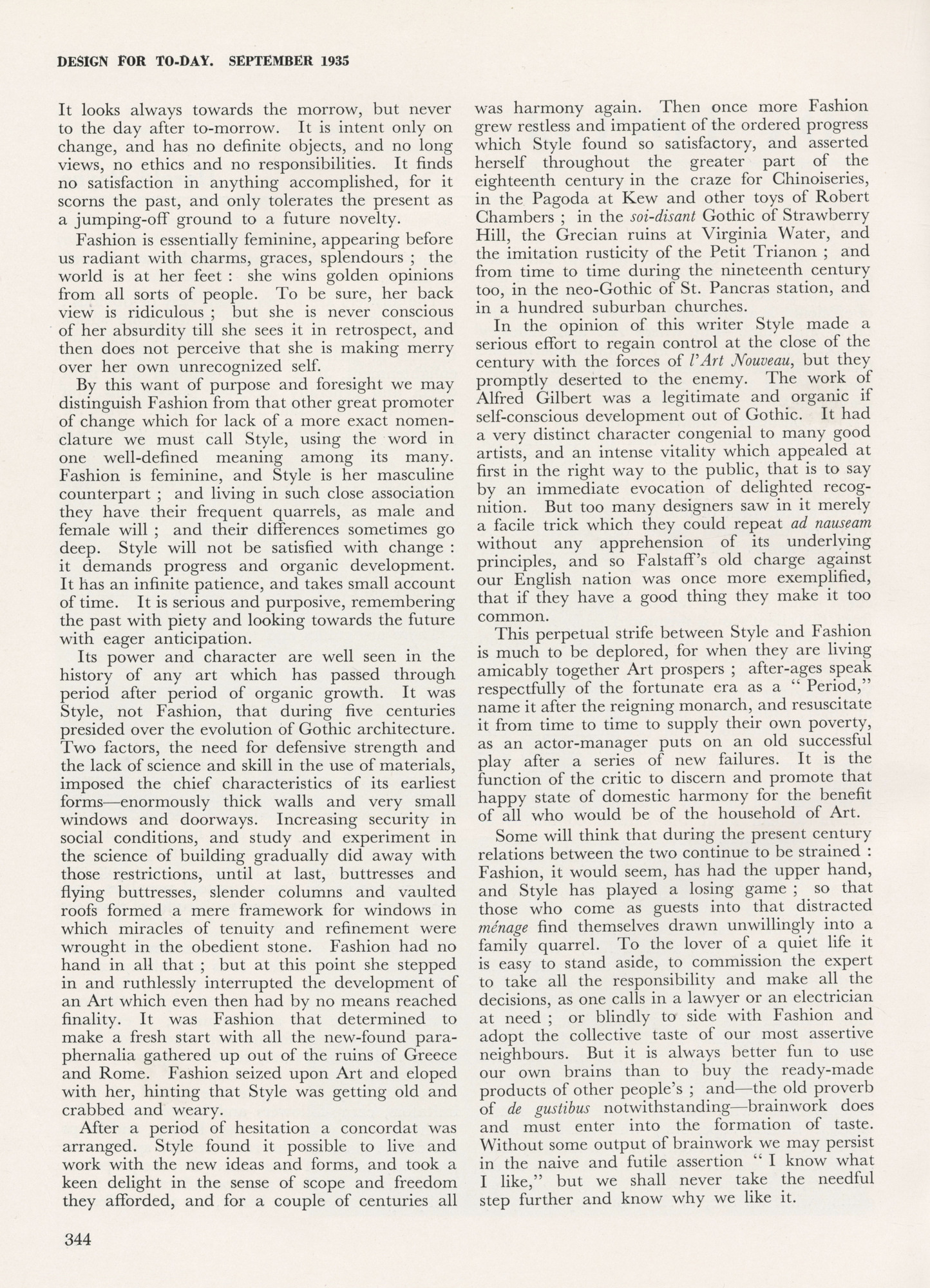9 of
You are browsing the full text of the article: Vox Populi
Click here to go back to the list of articles for
Issue:
Volume: 3 of Design For Today
| Design For Today 3 1935 Page: 343 | ||||||||||||||||||||||||||
| Vox Populi | ||||||||||||||||||||||||||
|

|
|
||||||||||||||||||||||||
| Design For Today 3 1935 Page: 344 | ||||||||||||||||||||||||||
| Vox Populi | ||||||||||||||||||||||||||
|

|
|
||||||||||||||||||||||||

